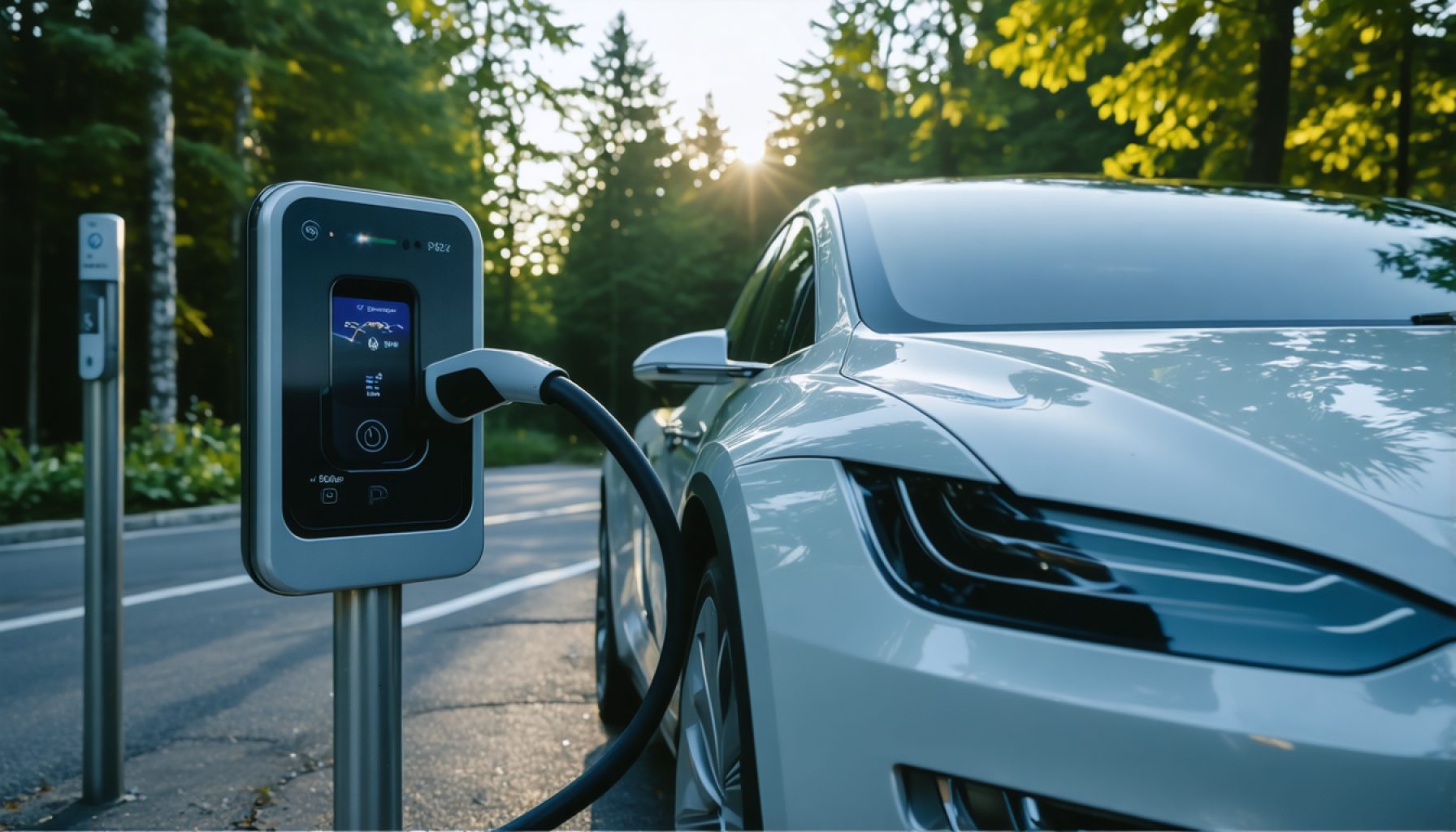- Electric vehicles lead the shift away from combustion engines, with charging stations rapidly expanding in urban and suburban areas.
- Fast-charging technology allows quick battery replenishment, taking 30 minutes to an hour and enhancing convenience for EV users.
- Charging stations incorporate renewable energy sources, contributing to sustainability goals and reducing the carbon footprint.
- The number of publicly accessible charging connectors increased by 60% in 2022, indicating progress toward a greener future.
- Challenges include “charging deserts” in rural areas and the need for grid updates to support the growing electric demand.
- Apps like PlugShare and ChargeHub improve accessibility by mapping charging stations and providing real-time availability updates.
- The rise of electric vehicles hints at a transformative journey towards reduced reliance on fossil fuels.
Electric vehicles, sleek and silent, glide through urban landscapes, their presence signaling a future unconstrained by the combustion engine’s din. As these battery-laden chariots capture public imagination, a new infrastructure silently burgeons, pivotal yet easily overlooked: the electric vehicle charging station.
Thrum of Progress
On city streets and suburban arteries, charging stations sprout with the vigor of spring blooms, transforming parking lots and roadside alcoves into hubs of electric sustenance. These oases offer more than mere utility; they pulse with the rhythm of progression. Fast-charging stations, capable of replenishing an EV’s battery within 30 minutes to an hour, stand as technological marvels, a contrast to traditional fuelling methods. Imagine the energy surge from a café espresso, only now it’s your car’s turn to reinvigorate.
Green is the Goal
Charging stations symbolize more than convenience. They are vanguards in the quest for sustainability. Global giants—Tesla, ChargePoint, and Electrify America among them—deploy solar panels and wind turbines to reduce the carbon footprint of vehicle recharging. According to the International Energy Agency, 2022 marked an increase of 60% in publicly accessible charging connectors worldwide, forecasting a greener planet.
Challenges on the Horizon
Yet, beneath the surface excitement lurk logistical hurdles. Charging deserts—a term coined for areas devoid of adequate infrastructure—pose significant challenges, primarily seen in rural landscapes. Additionally, concerns about grid capacity loom large, with experts emphasizing the urgent need for grid modernization to accommodate the electric influx.
Electrifying Accessibility
Despite obstacles, innovation gallops forward. Applications like PlugShare and ChargeHub refine accessibility, mapping charging stations, offering real-time updates on availability, and ensuring drivers never wander far from an electrical lifeline. Open up a phone. Tap. Access a multitude of power points stretching from San Francisco to Berlin.
Unplugged Potential
The burgeoning popularity of electric vehicles suggests a story still unfolding, rich with potential yet necessitating thoughtful oversight. As chargers hum like whispers of the future, the path forged points toward a cleaner horizon. Embrace this transition—plug in and power on.
With each charge, envision the possibilities of an electrified future and know you are a vital part of this unfolding narrative. A world less reliant on fossil fuels lies steadfast on the horizon, patiently awaiting the collective charge forward.
Transforming the Roads: The Surging Rise of Electric Vehicle Charging Stations
As electric vehicles (EVs) steadily reshape our transportation landscape, charging stations emerge as an unseen, yet pivotal cornerstone in the transition towards a cleaner, more sustainable future. While the public might be aware of the high-level narrative, a deeper dive reveals layers of facts and projections crucial to understanding this transformative journey.
Exploring Further: Key Facts and Trends
1. Diverse Charging Technologies:
– Level 1: These are the slowest, using standard household outlets and generally taking a full day to charge an EV.
– Level 2: These are common in public and residential charging stations, providing about 10-20 miles of range per hour.
– DC Fast Charging: These can charge an EV in about 30 minutes to an hour, significantly reducing the downtime required for charging.
2. Vehicle-to-Grid (V2G) Technology:
– Emerging V2G technology allows EVs to discharge energy back into the grid, potentially smoothing out peak electricity demands and integrating renewable sources more effectively.
3. Economic Impact and Job Creation:
– The EV charging market is projected to reach $49.2 billion by 2027, increasing demand for skilled technicians and providing job opportunities in station installation and maintenance sectors.
4. Real-World Applications:
– Many businesses are installing chargers to attract eco-conscious consumers and employees, transforming mall and office parking lots into charging hubs.
5. Infrastructure Initiatives:
– Countries like China and the United States are investing heavily in charging infrastructure, with governmental support to increase both the number and accessibility of stations.
6. Tech Innovations:
– Companies are experimenting with ultra-fast wireless charging and solar-powered chargers, which may redefine the basic concept of a charging station.
Overcoming Challenges and Critical Questions
– Grid Load: Can current electricity grids handle the increased load from widespread EV adoption? Ongoing research and investments into smart grids are expected to minimize the strain.
– Rural Accessibility: How can charging infrastructure be expanded to underserved rural areas? Portable and mobile charging solutions are being developed to fill this gap.
– Sustainability Concerns: Does the production of EVs truly result in a lower carbon footprint? While the lifecycle carbon emissions of EVs are reportedly lower than those of traditional vehicles, manufacturing emissions remain high; ongoing innovations aim to reduce these emissions.
Making Informed Choices
Practical Tips for EV Owners:
– Use Apps: Utilize apps like PlugShare to locate the nearest charging stations and plan journeys efficiently.
– Home Charging: Consider installing a home Level 2 charger if you have the space and resources, as it is currently the most convenient and economical option for regular charging.
Future of EV Charging
The evolution of EV charging stations signals both opportunities and challenges. It is an area ripe for innovation, with countless possibilities to improve sustainability, reduce emissions, and integrate renewable energy.
For more updates and to explore the latest advancements in automotive technology, visit AutoTrader. Embrace the electric revolution by staying informed and playing your part in creating a sustainable future.
